Unlike other systems, the Bawat BWTS takes just a short time to warm up therefore allowing for a quick movement into the treatment phase of the operation. Within 15 minutes, the containerised system was successfully treating foreign ballast water pumped from the tanks of the vessel prior to discharging the water over the side.
The Bawat BWTS system is designed for maximum effectiveness and efficiency. It has no filter, therefore no backflush. As a result, owners avoid the additional hassle of having to dispose of the resulting waste product.
The demonstration was carried out over a single day with a number of barge owners and representatives from port services organisations in attendance. Viewing in smaller groups and strict social distancing measures were maintained throughout to ensure the safety of our clients, our team and the Herbosch-Kiere team. We remained on hand throughout to answer any questions on the system and its practical operations.
Our event comes at a time when ballast water treatment is making its way to the top of vessel owners’ “to do” lists. This is likely a direct result of the fact that vessel IOPP renewal dates are fast approaching. Therefore, these vessels must now plan to utilise ballast water treatment systems if their operations involve the discharge of foreign ballast water. In our partnership with Bawat, it is our aim to provide a realistic and operationally practical alternative to the traditional one vessel, one system approach to meeting Ballast Water Convention compliance. For those with fixed trading routes, a port side containerised BWTS offers a more cost-effective treatment method across a fleet when compared with traditional retrofitting. Our recent demo was able to showcase the efficiency and ease with which the Bawat system can help owners meet their requirements.
